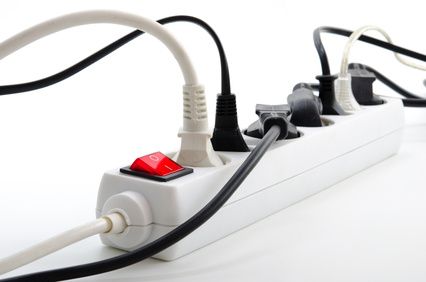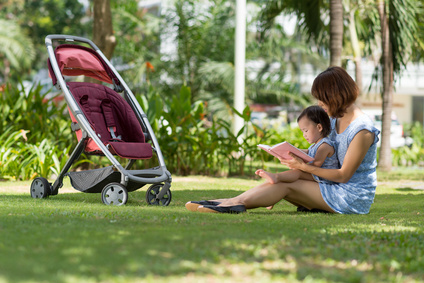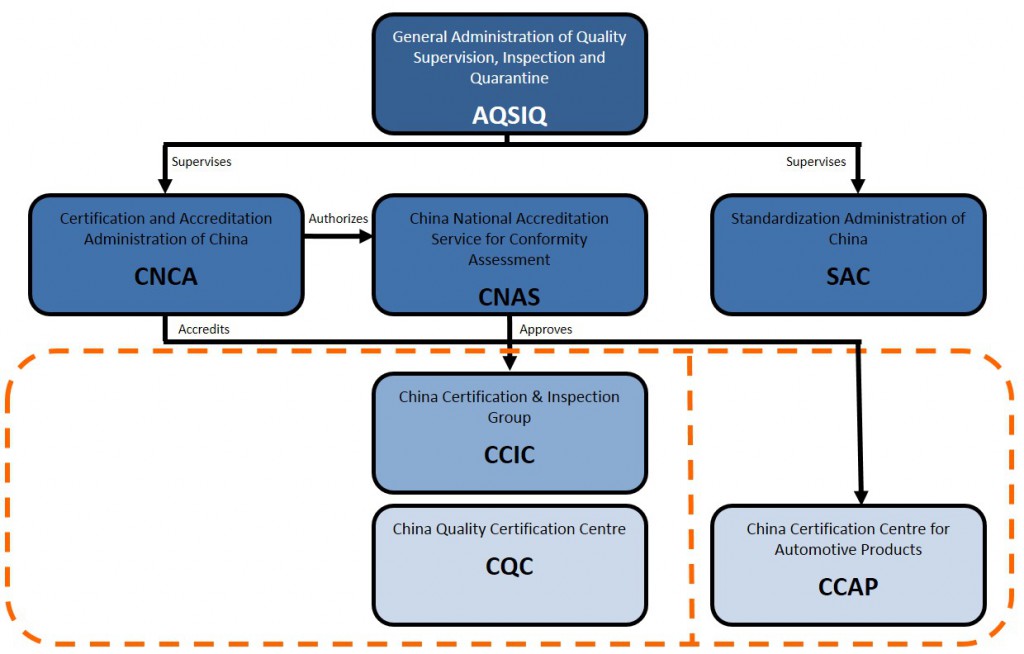CCC: Current Figures on the Development of the Automotive Sector in China
Even if the monthly trend of expansion in the Chinese automotive sector were to change, it is inevitable that growth will continue. In the first half of 2014, 9,708,500 passenger cars were produced with 9,633,800 of them being sold. According to a statement by the China Association of Automobile Manufacturers (CAAM), these figures show a growth in the production and sales of approximately 12%, in comparison with the 11% growth in the previous year, 2013.
By examining the development in the first half of 2014, particularly the numbers of SUVs (Sport Utility Vehicle) and MPVs (Multi-Purpose Vehicle) there has been a growing trend in this market. According to a report by CAAM, the production of SUV’s increased by 37.4% and the sales by 37.1%. Regarding the MPV, the production increased by 58.6% and sales by 55.4%. The growth rates of the production and sales of normal passanger cars remained low with 5.9% and 5.3% respectively.
 Another growing trend in China is in the sector of new energy vehicles. According to a statistic of CAAM, in the first half of 2014 already 20,692 units have been produced. These latest figures are 2.3 times as high as in 2013.
Another growing trend in China is in the sector of new energy vehicles. According to a statistic of CAAM, in the first half of 2014 already 20,692 units have been produced. These latest figures are 2.3 times as high as in 2013.
It is important for car manufacturers and suppliers to be well informed regarding the Chinese regulations and the certification requirements. Of particular importance is staying current with the ever-changing CCC certification regulations. We will inform you in our “News” section on our website regarding all certification changes, as well as newly added products that will require certification.
Information regarding CCC certification, the certification process and the costs can be found on our website. You will also find details regarding our certification package on our website including a general anticipated time frame. Take a look at our references section to see a list of some of our clients and what they are saying about us. For more detailed information please download our free booklet “CCC Made Easy” here. You may also consider our book “A Brief Guide to CCC: China Compulsory Certification”, which can be ordered directly on Amazon here.
Please do not hesitate to call or email with any questions you may have.
CCC: New Implementation Rules published
In their announcement from July 2014, the Chinese certification authority CNCA (Certification and Accreditation Administration) has publicized the release and implementation of 17 new “implementation rules” required for CCC certification. Although the Chinese authorities frequently publish updated standards and guidelines, the publication of such a large number of new regulations at once is unusual.
Implementation rules are the regulatory basis required for CCC certification of a particular product. They define the scope for product testing, as well as the overall process that will need to be completed before the CCC certificate can be issued. In these rules, you will find all of the relevant information, including the number of test samples required for testing in China and the corresponding GB Standards (GB stands for Guobiao, Chinese for “National Standard”). They also state how long the steps in the process will take. For example, the implementation rules for CCC certification of interior trimming automtotive parts should last between two and six days. The procedures of the initial audit, the annual follow up inspections and the correct marking of the component or product with CCC logo can also be found here.
Implementation rules of electric devices, such as audio or video equipment, list the EMC (electromagnetic compatibility) and safety relevant key components which must be listed separately in the application documents and tested accordingly.
According to the CNCA announcement, there will be new implementation rules for the following products or product groups:
– Low voltage motors
– Welding devices
– Electronic power tools
– Audio and video equipment
All new regulations will be officially implemented on September 1, 2014. They will replace the previous version and all new CCC certifications need to be in compliance with the new guidelines going forward. The notice applies to both manufacturers who currently have CCC and new CCC applicants, as well as the respective certification bodies, e.g. CQC (China Quality Certification Centre, chin. „中国质量认证中心“) and CCAP (China Certification Centre for Automotive Products, chin. „中汽认证中心“) that may need to make the appropriate adjustments.
Another interesting point is that several single rules will be combined in the future.
An example: Until now, there were two regulations for CCC certification of agricultural products (CNCA-05C-029: 2006 and CNCA-05C-074: 2010). From September 1, 2014 there will be only one CNCA guideline, No. C14-01: 2014.
Are you seeking for more information about this CNCA announcement or do you want to know if there will be new CCC implementation rules also for your product? Then contact us! please do not hesitate to contact us by phone (UK: +44 2071931135, US: +1 773 654-2673) or email with any questions you may have.
For more detailed information please download our free booklet “CCC Made Easy” here. You may also consider our book “A Brief Guide to CCC: China Compulsory Certification”, which can be ordered directly on Amazon here.
CCC Investigation Letter for Products That Do Not Need CCC Certification
Often products which do not need CCC are detained in Chinese customs because customs officers wrongly determine that a certification obligation is necessary. To minimize the risk, an Investigation Letter (also known as a CCC Clearance Certificate) can often clarify the reasons that a particular product does not need CCC certification.
It is important to carefully check to see if there is a CCC certification need before applying for an Investigation Letter. Please keep in mind that the HS Code or the respective customs tariff is not sufficient for determine certification obligations. The HS Code is often mistakenly used by manufacturers as the only indicator to determine the CCC obligation of products or individual components. For reliable determinations of a certification need, the product should always be analyzed according to its specific product functions and performance. Only then, can the product be checked to see which applicable Chinese regulations would apply.
Please note that an Investigation Letter cannot be used for goods that are already detained in customs. For this you will need a CIQ declaration at the local CIQ (China Entry-Exit Inspection and Quarantine Bureau), or you may need to apply for an exemption certificate.

CCC Investigation Letter by China Certification Corporation
China Certification Corporation can issue you an Investigation letter for non-mandatory CCC products in as quickly as 4 working days (from the time the application and necessary documents are submitted). After determining that the product does not need CCC, a simple application form is filled out with the relevant product specifications and submitted to the third party certification company who will issue the Letter of Investigation. The letter clearly points out the reasons that the product does not need CCC certification. This letter is helpful at customs, and can also be useful in negotiations with customers in China.
Another option for automotive products that do not need CCC, would be an official rejection letter from the CCAP (China Certification Centre for Automotive Products). This letter would show that the CCAP has determined that the product does not need CCC. Unfortunately, the CCAP rejection letter is only available for automotive parts.
Please contact us for a free and non-binding CCC check of your product.
Write us an Email or call us: Germany: +49 69 271 3769 150, UK: +44 2071931135,
US: +1 773 654 2673
China Certification Corporation assists companies with every aspect of their CCC certification:
- We will check to see if your product needs CCC certification
- We will determine the best way to import your products into China
- We will assist you with the necessary paperwork required for shipping your products
- We coordinate the process and prepare the customs clearance in China
- We solve customs issues related to demands for Chinese certifications such as CCC, CEL, CFDA, CCIC or CIQ.
- If the products require a certification, we will examine the possibility of applying for an exemption certificate
For more detailed information please download our free booklet “CCC Made Easy” and “Customs Clearance”
CCC: Update for External Single Voltage AC-DC and AC-AC Powers Supply Energy-Conservation Certification Rules
The Standardization Administration of the People’s Republic of China (chin.: 国家标准化管理委员会) issued GB Standard 20943-2013 on September 18, 2013 (announcement No. 18/2013). This GB Standard is in regards to the Minimum allowable values of energy efficiency and evaluating values of energy conservation for single voltage external AC-DC and AC-AC power supplies, and will come into effect September 21, 2014. It is also important to note that the China Quality Certification Centre (CQC) has released energy conservation certification rule CQC31-461236-2014 which refers to single voltage external AC-DC and AC-AC power supplies. This CQC certification guideline will supersede the current CQC31-461236-2009.
 The new requirements of GB 20943-2013 and CQC31-461236-2014 are as follows:
The new requirements of GB 20943-2013 and CQC31-461236-2014 are as follows:
- As of September 1, 2014 the CQC will use the new version of GB 20943-2013 for single voltage external AC-DC and AC-AC power supplies. To assure compliance and maintain certificates the products will need to be checked and tested in accordance with the new standard.
- Current energy-conservation certificates for single voltage external AC-DC and AC-AC power supplies will need to be updated and certificate holders will need to submit an application for changing of the certificate.
- The certificate changes must be completed by June 1, 2015. If the application is not updated, the certificates will be temporarily suspended. If then the certificate holder still fails to replace the certificates by September 1, 2015, they will be canceled.
It is the obligation of manufacturers to maintain compliance with the ongoing changes to the GB Standards and the Implementation Rules. Unfortunately, it is common for these announcements to only be made in Chinese and with very little notice.
Information regarding CCC certification, the certification process and the associated costs can be found on our website. You will also find details regarding our certification package on our website including a general anticipated time frame. Take a look at our references section to see a list of some of our clients and what they are saying about us. For more detailed information please download our free booklet “CCC Made Easy” here.
You may also consider our book “A Brief Guide to CCC: China Compulsory Certification”, which can be ordered directly on Amazon here.
In addition, you can watch our two-minute video about the CCC certification here.
Please do not hesitate to call or email with any questions you may have.
CCC Certification Exemption
Many manufacturer ask for an exemption of the CCC certificate to avoid CCC Certification. It is possible for some CCC mandatory products to be imported into China without certification if they meet certain exemption criteria. The applicable regulations must be examined so that there will not be any issue with customs clearance despite the exemption status.
It is important to check if a product requires CCC prior to the application for the exemption. Please keep in mind that the HS Code is not sufficient for determine CCC obligations. The HS Code or the respective customs tariff number, is often mistakenly used by manufacturers as the only indicator to determine the CCC obligation of products or individual components. This frequently results in goods being detained at Chinese customs. For a reliable determinations of a product’s CCC obligation, the product should be analyzed according to its specific product functions and performance.
 Application for CCC Exemptions
Application for CCC Exemptions
There is a lot of erroneous information regarding what qualifies for exemption, how to apply and what supporting documents are required. Sorting this out can be difficult for a manufacturer, so it is suggested to be sure that the product does in fact qualify. Even if the product meets the criteria for exemption, it is not a given that exemption status will be accepted by customs.
Some possible exemptions include, but are not limited to, products that meet the following criteria:
- Products used for science purpose and product tests
- Products that are used as an exhibit at fairs
- Products that will be exported out of China again (must show proof)
- Products that are used for manufacturing other products and are not sold on the Chinese market
- Products that are imported in small volume (low volume exemption)
If any of the exemption rules apply to your products and the application is not too cost intensive, our experts can consult you regarding customs clearance in China.
Our service package for complete customs clearance includes solutions to insure a smooth import.
The following are included in our service package:
- We evaluate the product and determine the most effective import solution to get you goods to China
- We assist you with preparation of the necessary documentation for importing your goods
- We coordinate your process and prepare customs clearance in China
- We solve customs clearance issues that are caused by demands of certifications – such as CCC, CEL, CFDA, CCIC or CIQ
- If your products require a certification we check the possibilities of an exemption
For more detailed information please download our free booklet “Customs Clearance”
China Certification Corporation consults manufacturers with every aspect of their CCC certification:
- Straightforward, transparent management of the certification process
- All-inclusive consulting through our German, Chinese and US based offices
- Important contacts to all relevant Chinese institutions
- No Chinese language skills are required, we will handle all of the necessary communications with the certifying authorities and test labs for you
Please contact us for a free and non-binding CCC check of your product.
Write us an Email or call us: Germany: +49 69 271 3769 150, UK: +44 2071931135,
US: +1 773 654 2673
Video about CCC Certification
The process of CCC certification can be confusing and frustrating to figure out. Manufacturers usually assign their quality engineers or officers with the daunting task of getting their products certified. Unfortunately, on official governmental websites there is no clear path laid out to explain the process. The lack of clarity and language/communication barriers combined with the necessity to deal with the Chinese authorities can make the certification process seem overwhelming.
MPR China Certification GmbH / China Certification Corporation released a video which clearly illustrates the process of CCC certification, breaking it down to manageable steps.
The two-minute video gives a broad over-view of the necessary steps involved in getting
CCC certification. The video points out specific areas of importance including application preparation, need for test samples to be sent and cleared through customs in China, and the importance of consistency between the application, test reports, CCC certificate and printing permission.
You are currently viewing a placeholder content from Default. To access the actual content, click the button below. Please note that doing so will share data with third-party providers.
The video is available on MPR China Certification GmbH / China Certification Corporation’s website, Youtube channel and on the social media profiles of the company, google+ and facebook. It is available in both English and German.
If you are based in China and cannot access the video, please click here.
If you have any questions regarding any aspect of CCC, please don’t hesitate to contact us. We can discuss your specific concerns and offer personalized solutions.
Contact us by phone (UK: +44 2071931135, US: +1 773 654-2673) or email with any questions you may have.
For more detailed information please download our free booklet “CCC Made Easy” here. You may also consider our book “A Brief Guide to CCC: China Compulsory Certification”, which can be ordered directly on Amazon here.
CCC Certification by Chinese Authorities
There are several certification authorities responsible for certifying products for the Chinese market. Manufacturers of products with a CCC obligation are required to apply for the CCC certification with the responsible certification authority. After the application is accepted and approved, manufacturers will need to get their products tested in China by an accredited test laboratory and have their manufacturing facility inspected by the appropriate Chinese auditors.
It can be difficult for a manufacturer to know which certifying authority will be responsible for their product type. It is important to understand the roles and scope of each certifying authority before applying. The most important Chinese authorities are:
AQSIQ
General Administration of Quality Supervision, Inspection and Quarantine (AQSIQ) is responsible for national quality, certification and accreditation, standardization as well as administrative law enforcement.
CNCA
Certification and Accreditation Administration of China (CNCA) is responsible for the supervision and nationwide coordination of certification and accreditation activities as well as the maintaining the certification database.
CNAS
China National Accreditation Service for Conformity Assessment (CNAS) is responsible for the approval of certification organizations, laboratories and inspection bodies.
SAC
Standardization Administration of China (SAC) is the standards organization in China responsible for unified management, supervision and overall coordination of standardization and implementation.
CCIC
China Certification & Inspection Group (CCIC) is a third party certification organization for verification, inspection, certification and testing services.
CQC
China Quality Certification Centre (CQC) is the largest independent certification body with responsibilities for the implementation of product certification.
CCAP
China Certification Centre for Automotive Products (CCAP) is the certification body for automotive products sold on the Chinese market.
China Certification Corporation consults manufacturers with every aspect of their CCC certification:
- Straightforward, transparent management of the certification process
- All-inclusive consulting through our German, Chinese and US based offices
- Important contacts to all relevant Chinese institutions
- No Chinese language skills are required, we will handle all of the necessary communications with the certifying authorities and test labs for you
Please contact us for a free and non-binding CCC check of your product.
Write us an Email or call us: Germany: +49 69 271 3769 150, UK: +44 2071931135,
US: +1 773 654 2673
CCC: Certification of Push Chairs for the Chinese market
The catalogue of mandatory CCC certification for products intended for the Chinese market is extensive and includes a broad spectrum of product groups. Automotive parts, IT products, cables and technical devices all require CCC, and so do push chairs. Products that need CCC (China Compulsory Certification) must have the certification before they can be legally imported, traded, used or sold in China.
The product testing which is needed to pass CCC certification is determined by the corresponding Chinese GB (GB stands for Guobiao, Chinese for “National Standard”) Standard 14748-2006 “Safety Requirements for Wheeled Child Conveyance“. GB Standards define the scope, parameters and prescriptive limits for product testing required for the CCC certification. The complete process of CCC certification of push chairs is regulated by the
CCC Implementation Rules CNCA-13C-068:2006 “Cycles, Ride-on Vehicles and Similar Products for Young Children“ from March 2006.
 Applications for the CCC certification of push chairs are handled by the CQC (China Quality Certification Centre). It is important that the manufacturer complete the application carefully and submit it along with all relevant documents to the CQC. Once accepted, the certifying authority will issue a factory code and a “test sample request.” The test samples will need to be sent to a CNCA (The Certification and Accreditation Administration of the People’s Republic of China) accredited test laboratory in China for testing.
Applications for the CCC certification of push chairs are handled by the CQC (China Quality Certification Centre). It is important that the manufacturer complete the application carefully and submit it along with all relevant documents to the CQC. Once accepted, the certifying authority will issue a factory code and a “test sample request.” The test samples will need to be sent to a CNCA (The Certification and Accreditation Administration of the People’s Republic of China) accredited test laboratory in China for testing.
Components that belong to the scope of testing include:
- Burning tests of main materials
- Braking System
- Parking brake and locking devices
After testing in China is completed, the initial factory inspection takes place. During this factory audit, Chinese auditors from the CQC inspect the production facility and review the quality management systems to ensure they both meet the CCC quality assurance requirements. Thorough preparation for the inspection is very important and a pre-audit consultation may be a reasonable consideration to insure a successful certification.
After product tests and factory inspection have been passed, the CCC certificate will be issued and the manufacturer can apply for the “permission of printing”. There are specific regulations that need to be followed when marking products with the official CCC logo.
If you want to know more about CCC certification of push chairs, please do not hesitate to contact us by phone (UK: +44 2071931135, US: +1 773 654-2673) or email with any questions you may have.
For more detailed information please download our free booklet “CCC Made Easy” here. You may also consider our book “A Brief Guide to CCC: China Compulsory Certification”, which can be ordered directly on Amazon here.




